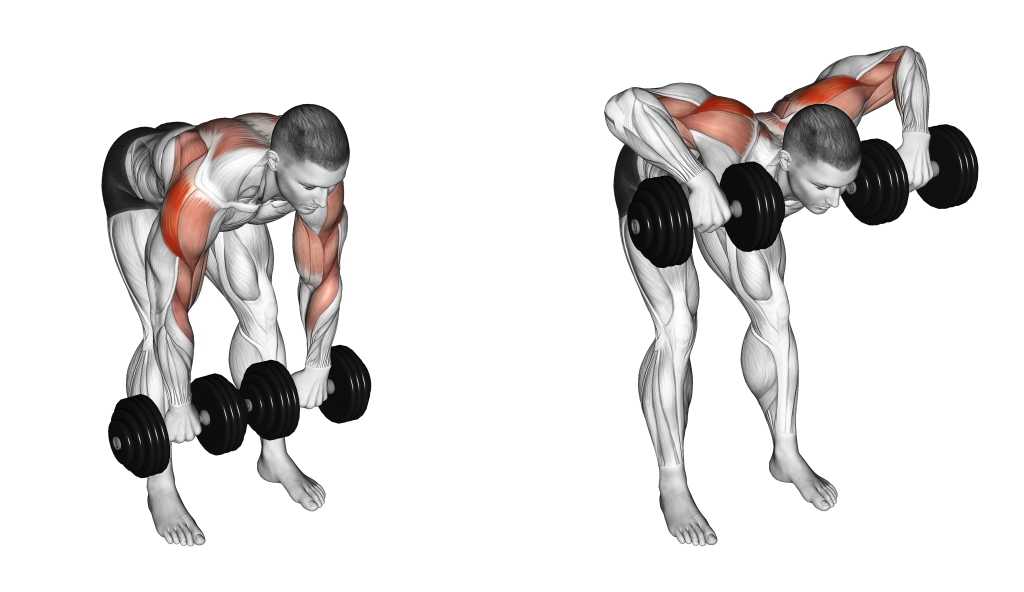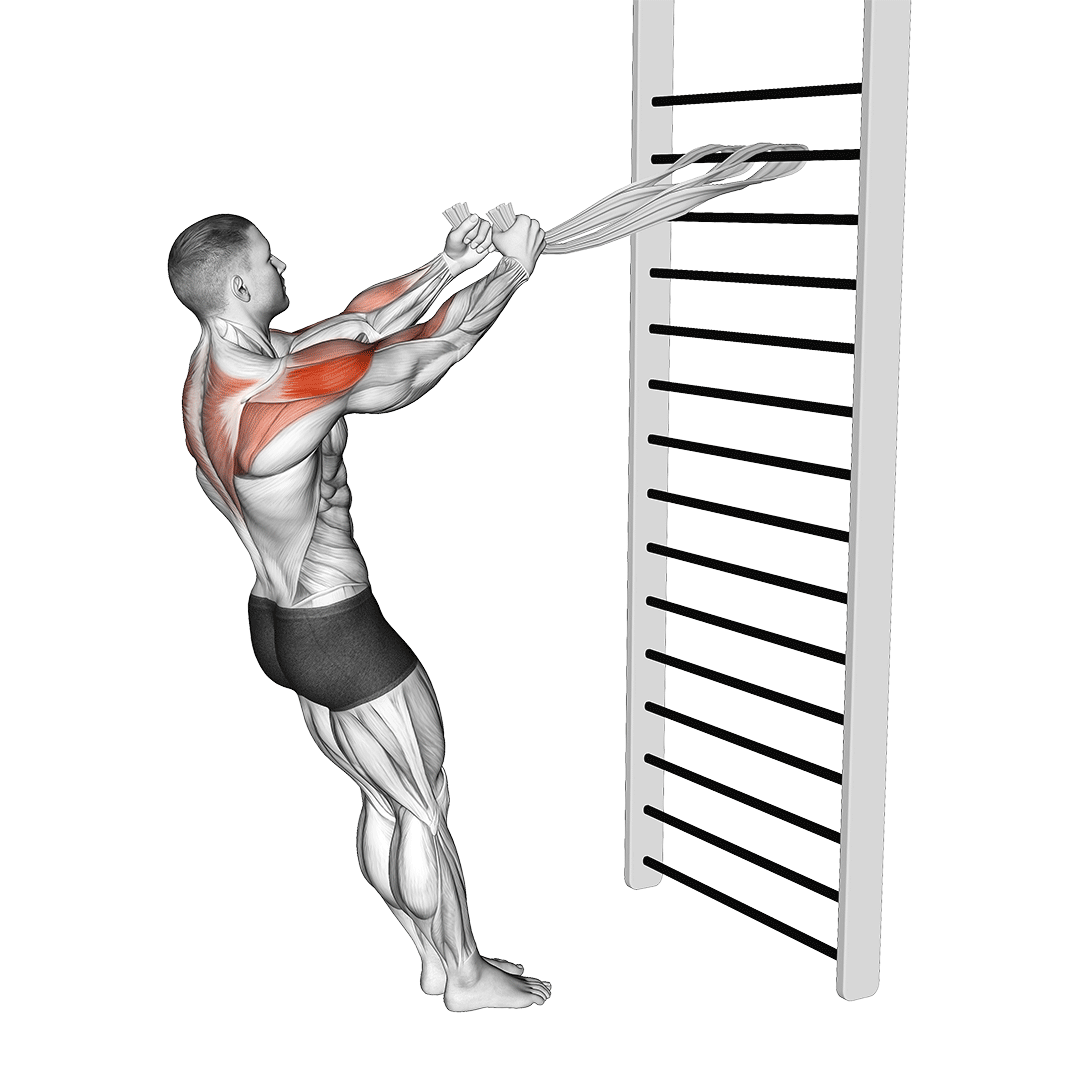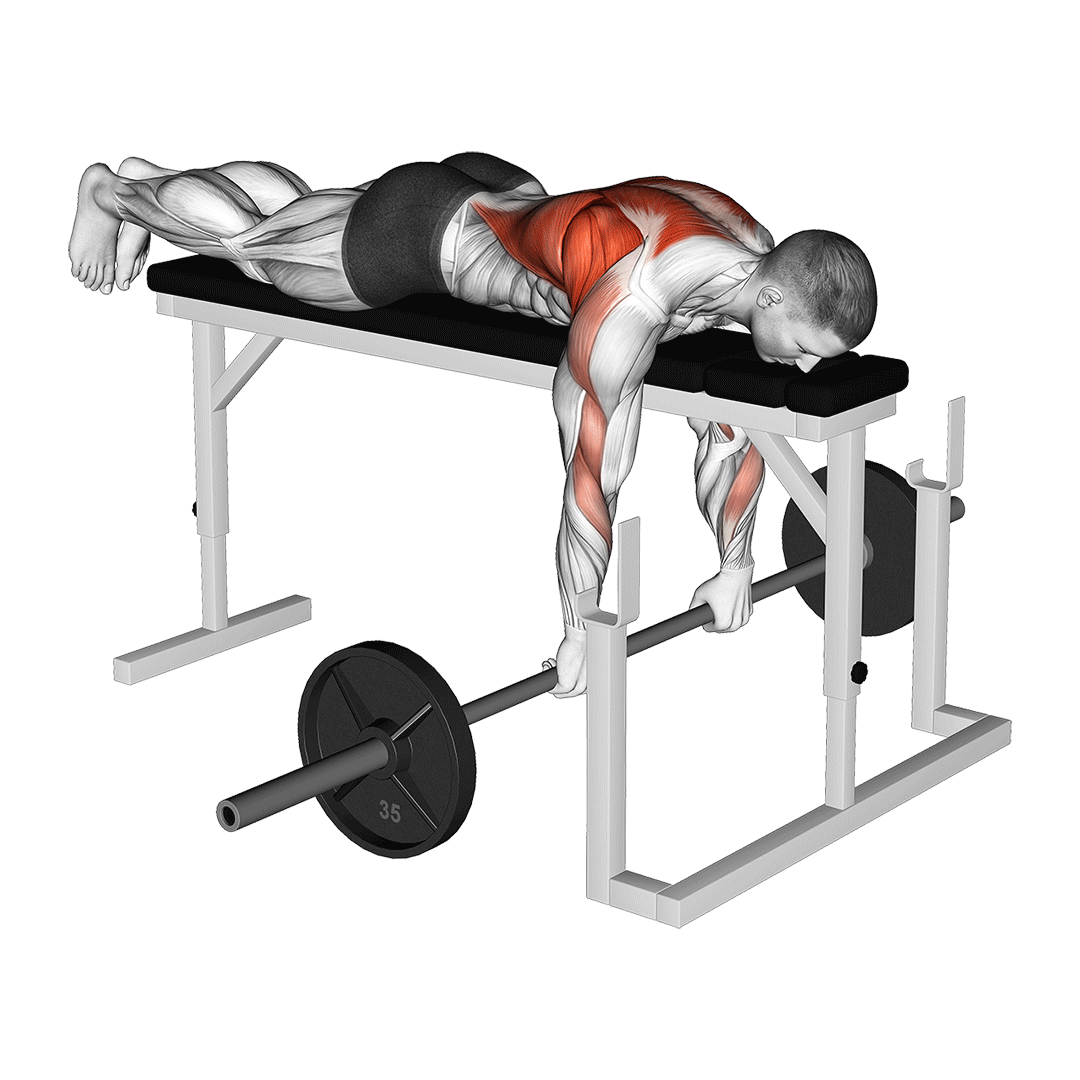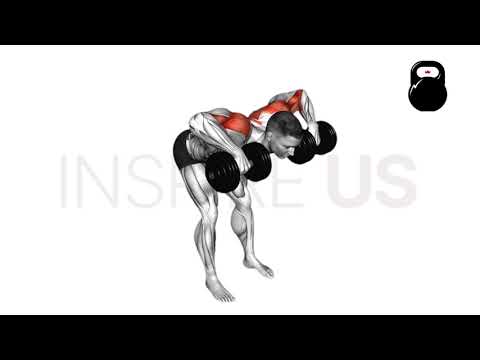Dumbbell Face Pull: Benefits, Muscles Worked, and More!
Although less effective in the vein of physical rehabilitation, dumbbell face pulls are comparatively better than their machine counterpart for building strength and real-world carryover.
Essentially, dumbbell face pulls will have the lifter lying chest-down atop an incline bench or simply hinged forward as they pull a pair of dumbbells towards their chin in a movement pattern similar to a high row or seal row.
What are Dumbbell Face Pulls?
Dumbbell face pulls are a free weight compound exercise primarily used for inducing muscular hypertrophy in the posterior deltoid head, trapezius, infraspinatus and other upper back muscles.

Because of their relatively small scope and intentionally low intensity, dumbbell face pulls are meant to be programmed as an accessory exercise, rather than the primary compound pulling movement of the workout.
Apart from being used for bodybuilding or athletic purposes, dumbbell face pulls are also occasionally employed to correct minor muscular imbalances or poor upper back posture.
If performing the exercise for these purposes, remember to first consult a medical professional.
Are Dumbbell Face Pulls Right for You?
Dumbbell face pulls are relatively simple and low-impact, meaning that even complete novices can perform them with some guidance.
However, those with a history of elbow, shoulder or scapula issues may wish to avoid all forms of face pull - as well as those who cannot have their chest compressed, as will be the case when lying chest-down atop the incline bench.
How to do Dumbbell Face Pulls
The starting position will have the lifter hinged forward at the waist with the dumbbells held out in front of them.
From this starting position, the lifter then pulls with their posterior deltoids and upper back muscles, drawing the dumbbells towards their upper chest and allowing the elbows to bend as the upper arms rotate parallel to the shoulders.
As this motion is performed, the lifter simultaneously retracts their shoulder blades, squeezing them together as the arms come to a stop alongside the torso.
With the arms parallel to the shoulders, scapula retracted and elbows bent, the lifter can then slowly release tension in their scapula as they slowly relax their arms back downwards.
Once the arms are fully extended beneath the torso once more, the repetition is considered to be complete.
Sets and Reps Recommendation
With how low-impact and light dumbbell face pulls can be, aim for 2-3 sets of 12-16 repetitions at a minor or moderate level of intensity.
What Muscles Do Dumbbell Face Pulls Work?
Contrary to the claims of many other publications, dumbbell face pulls are actually classified as a compound exercise due to more than a single joint being dynamically involved throughout its movement pattern.

With multiple joints moving in concert, multiple muscle groups are also contracted to facilitate this movement.
These muscles are divided according to the role they play in the movement, with those shortening or lengthening being dubbed “mobilizer” muscles, and those that remain relatively the same length being called “stabilizer” muscles.
Mobilizer Muscles
Dumbbell face pulls primarily work the posterior head of the deltoids, the middle section of the trapezius and the muscles of the rotator cuff muscles - including the teres minor and major, infraspinatus and the rhomboids.
The mobilizer muscles are those targeted to the greatest degree by the exercise, and as such will also receive the most benefit as well.
Stabilizer Muscles
Alongside the aforementioned mobilizer muscles, the stabilizer muscles of the elbow flexors, medial deltoids and remaining sections of the trapezius also aid in stabilizing both the arms and shoulder girdle as the movement is performed.
Stabilizer muscles primarily exhibit isometric contraction, meaning no significant shortening or lengthening is present.
This is less effective for building muscle mass or improving strength, but also means that said muscles will not be fatigued to the same extent as well.
What are the Benefits of Doing Dumbbell Face Pulls?
Dumbbell face pulls offer many of the same benefits as other variations of the face pull, only with a few unique advantages owing to its free weight nature.
Excellent for Strengthening Upper Back and Rear Delts
The main benefit to dumbbell face pulls is its capacity to develop strength and mass in muscles that are otherwise only a secondary priority in other exercises.
The middle trapezius, posterior deltoids and rotator cuff muscles are often underdeveloped due to the majority of back exercises favoring muscles like the latissimus dorsi or upper trapezius muscles.
Fortunately, dumbbell face pulls are more than enough to develop these areas, helping round out the physique and produce an overall more muscular frame.
Greatly Enhances Overall Shoulder Girdle Stability
Face pulls are considered to be such an effective exercise because of their capacity to build stability in the entire shoulder structure - something that is often lacking in most weightlifters, especially in regards to the posterior deltoid heads.
With a slow tempo and long time under tension, dumbbell face pulls help build isometric strength in the upper back and shoulders, allowing them to function more effectively as antagonist muscles or stabilizer muscles.
Corrects Poor Upper Back Posture
Occasionally, forward-rounding shoulders or poor cervical spine curvature is caused by muscular weakness or imbalance in the upper back.
While it will indeed depend on a case by case basis, these sorts of issues are often corrected through mobility and resistance exercises - a common one being the face pull.
If performing dumbbell face pulls for this purpose, remember to first seek out the advice of a physical therapist, as certain underlying conditions causing poor posture can actually be worsened by face pulls.
Carryover to Other Pull Exercises
Dumbbell face pulls are excellent as an accessory movement to other types of pull exercise - the most relevant being high rows and other horizontal pulls focused on the mid-back.
For lifters who find their rowing progression limited by poor posterior deltoid stability or issues with maintaining scapular retraction under significant load, the dumbbell face pull is the perfect choice of accessory.
If using dumbbell face pulls for this purpose, ensure that they are programmed after major compound pull movements have already been completed.
Reinforces Scapular Retraction, Scapular Depression and External Shoulder Rotation
Even outside of a strictly muscular perspective, performing dumbbell face pulls on a regular basis will reinforce a lifter’s capacity to execute scapular retraction, depression and external rotation of their shoulders.
Each of these biomechanics is present in the face pull through a full range of motion, improving the stability and conscious control to which they are performed.
Lifters with difficulty consciously depressing or retracting their shoulder blades can use face pulls at a low level of resistance to teach themselves.
Likewise, those that have difficulty keeping the shoulders neutral or externally rotated against resistance can also use dumbbell face pulls to correct this issue.
Common Dumbbell Face Pull Mistakes to Look Out For
In order to avoid injury and make the most out of dumbbell face pulls, avoid the following common mistakes.
Failing to Retract Scapula
One of the most important aspects of the dumbbell face pull is proper scapular retraction.
Without pinching the shoulder blades together, the muscles of the upper back are unlikely to be targeted correctly, and the overall range of motion of the exercise will be greatly shortened.
In order to perform dumbbell face pulls correctly, ensure that the scapula retracts and depresses as the arms bend parallel to the shoulders. The peak of the repetition should have the scapula fully retracted and the arms fully abducted as well.
Internal Shoulder Rotation
At the start or end of the repetition, avoid allowing the shoulders to hunch forwards in the direction of the dumbbells. This can create unneeded strain within the shoulder joint and result in irritation or chronic overuse injuries of the shoulder as a whole.
Aim to begin and end the repetition with the shoulders in a neutral position, and to externally rotate them as the dumbbells are pulled towards the face.
Poor Range of Motion
As is the case with practically any other exercise, the dumbbell face pull is made less effective when performed to an insufficient range of motion. Failing to complete a full ROM can even lead to the development of sticking points, poor mobility and muscular imbalances over the long term.
Ensure that each repetition starts and ends with the arms fully extended beneath the torso, with the apex of the repetition involving fully retracted shoulder blades, externally rotated shoulders and the arms pulled back as much as possible.
Rapid Tempo or Rapid Eccentric
Much like their machine-based counterpart, the dumbbell face pull derives much of its training stimulus from proper time under tension.
In order to achieve this length of time, not only should a full range of motion be completed, but the lifter must also ensure that they spend enough time throughout said range of motion.
Avoid performing dumbbell face pulls too quickly, and aim to stretch out the eccentric or “negative” portion of the repetition for better results.
Arms Pulling Too Low
In order to avoid turning the exercise into a seal row, aim to keep the incline bench relatively upright, and to pull the arms out to the sides, rather than behind the torso.
Pulling the dumbbells behind the torso while beneath the shoulders will contract the latissimus dorsi and biceps brachii, rather focusing on the rear delts or upper back. The apex of the repetition should have the upper arms parallel to the shoulders both vertically and horizontally.
Dumbbell Face Pull Alternatives and Variations
If the dumbbell face pull isn’t exactly what you need in your training program, try the following alternatives out.
One Arm Dumbbell Face Pulls
The one arm dumbbell face pull is simply a unilateral variation of dumbbell face pull - allowing for even greater correction of muscular imbalances and an easier time focusing on proper muscular contraction.
Although this particular variation of dumbbell face pull will take longer to complete, it can be an efficient method of teaching lifters how to isolate their posterior deltoids or perform scapular retraction with only one shoulder blade at a time.
Towel Face Pulls
For lifters without access to any sort of equipment whatsoever, making use of a towel wrapped around a stable anchor overhead can allow for a bodyweight face pull to be performed.

To do so, grip both ends of the towel and walk the feet several steps towards the anchor, tilting the body so that tension in the towel and arms keeps the torso upright. Pull the head towards the center of the towel to complete the repetition.
Although towel face pulls can be used as a substitute on vacation, keep in mind that dumbbell or machine face pulls are a far better choice as far as muscular development goes.
Seal Rows
Seal rows are an advanced row variation where - like the dumbbell face pull - the lifter lies face-down atop a bench as their arms grip weights beneath their torso.

Rather than pulling a pair of dumbbells towards the face however, the seal row involves rowing a barbell towards the abdomen. In comparison to face pulls, this allows for greater recruitment of the latissimus dorsi and other lower back muscles alongside the biceps brachii.
Frequently Asked Questions (FAQ)
Is the Dumbbell Face Pull Safe?
Yes - dumbbell face pulls are entirely safe, so long as you have no history or currently suffer from injuries to the shoulders or scapula. Ensure that proper technique is followed and only a low amount of weight is lifted.
What do Dumbbell Face Pulls Correct for?
Dumbbell face pulls correct a wide variety of issues relating to the upper back or the shoulders.
A trapezius or rear deltoid imbalance, poor scapular retraction or unstable rotator cuff muscles can all be improved with dumbbell face pulls - so long as it is pre-approved by a medical professional, of course.
How Heavy Should Dumbbell Face Pulls be?
As light as possible for you to “feel the burn”, so to speak. If the weight is too light, then the exercise may be less effective - but if too heavy, may result in injury. Aim for the minimum effective amount of weight possible.
References:
1. Schory A, Bidinger E, Wolf J, Murray L. A systematic review of the exercises that produce optimal muscle ratios of the scapular stabilizers in normal shoulders. Int J Sports Phys Ther. 2016;11(3):321-336.
2. Kim TW, An DI, Lee HY, Jeong HY, Kim DH, Sung YH. Effects of elastic band exercise on subjects with rounded shoulder posture and forward head posture. J Phys Ther Sci. 2016 Jun;28(6):1733-7. doi: 10.1589/jpts.28.1733. Epub 2016 Jun 28. PMID: 27390405; PMCID: PMC4932046.

